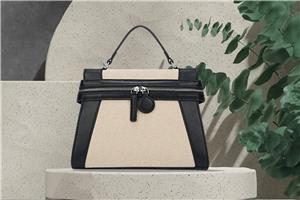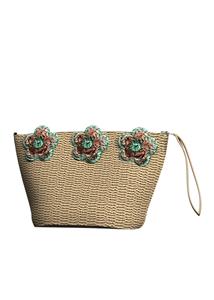Challenges and Remedies for Dyeing Natural Straw Substrates
Challenges and Remedies for Dyeing Natural Straw Substrates
Natural straw materials are famous because of their environmental and sustainable qualities and thus can be used to make straw bags, decorations, home goods, and so on. Despite this fact, having natural beauty, its dyeing process comes with great difficulty. This paper discusses the reasons why the natural straw material does not dye well and some solutions.
Material Characteristics
In general, rattan, wheat straw, raffia, corn husk, and other natural straw materials have a porous and uneven structure, which is difficult to fully absorb, and the dyes often yield mottled colors after dyeing. What is more, the natural color and texture of those materials can result in the final color difference from the predesigned colors.
Absorption Problems
One of the most significant characteristics of straw material is dyeing. It is also very poor in absorbing water, one of the vital components when dyeing. Dyeing means fixing the dye on a material, though the absorption of water and dye by the surface and inner fibers is not adequate and thus limits the depth and fastness of the color. With the kind of poor absorption, it will not achieve saturation and sheen like other materials, even if dyed well.
Dye Selection and Environmental Concerns
The appropriate choice of dye also goes a long way in dyeing straw materials. Although the natural dyes are friendly to the environment, the color so produced might not last for long. The chemical dyes, on the other hand, might create coloration that poisons the environment. Besides, the chemical ingredients in the dye might react with the natural oils and other components of straw materials, thus altering the dyeing effect or damaging the materials.
Influence of Environmental Factors
The influence of environmental factors Key environmental factors that impinge on the dyeing process of straw materials are humidity and temperature. In conditions of excessive or too low humidity, the fibers of straw materials will further shrink or expand, respectively, causing poor dye uptake and unevenness of color. Another thing is that improper temperature sometimes develops the scenario that the dyestuff on the material surface dries up faster to support even coloration.
Solutions and Alternative Choices
In order to improve dyeing with natural straw materials, the suitable method and treatment process were selected. This kind of straw material is being pretreated for enhanced water absorbance or rough material, partially alleviating the problem of uneven dyeing. In addition, the development of environmentally friendly dye formulas can effectively reduce the environmental impact.
Although some straw materials are difficult to dye, with much difficulty, the effects of their dyeing would not be as good as other dyed ones, so that the alternative materials may also be selected to get better effects. Take natural corn husk, for instance; it can be replaced by special treated paper, and raffia can be replaced by PP fiber. In visual and functional aspects, not only do these materials keep their environmental attributes, but they also show better dyeing results, which very closely match the original materials.
Therefore, because of the complexity associated with the dyeing process, designers and manufacturers may decide to maintain the straw material in its natural state of color or use decorated elements with regard to the several stages in the production process in order to bring more visual impacts than direct dyeing the whole product.
Although the coloring of natural straw materials is quite a challenge, scientific methods and technological improvements are in place for continued explorations leading to more innovations and eco-friendly possibilities, preserving all the natural beauty of the material.




